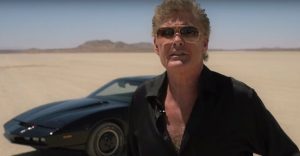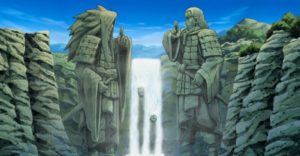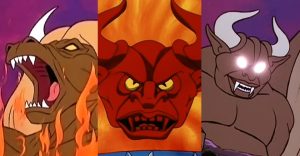Star Wars: Why Qui-Gon Is The Most Underrated Character In The Prequels

In Star Wars: The Phantom Menace, the viewers are introduced to a very young Padawan Obi-Wan Kenobi (Ewan McGregor) and his Jedi Master, Qui-Gon Jinn. They are sent by the Galactic Senate to solve a dispute with the Trade Federation, and they end up discovering, in Qui-Gon’s words, “bigger fish” behind the conflict. The film culminates with Darth Maul (Ray Park) finally confronting Qui-Gon and Obi-Wan, revealing that the Sith Order is back, and confirming Qui-Gon’s fears.
Qui-Gon has many traits that make him the quintessential Jedi: he is kind, wise, and values living in the present (something he reminds Obi-Wan to do throughout the film). And then there’s the trait that stands out the most and indicates just how important Qui-Gon is to the Star Wars prequels: he does not follow rules. Qui-Gon believes in Anakin like no one else does, and decides to train him in spite of the Jedi Order’s advice. In Simu Liu’s words: “Qui-Gon is a bit of a maverick. He doesn’t care.” He recognizes Anakin as the “Chosen One,” and his investment in training the boy has tragic undertones, as the viewers know Anakin will eventually become one of the most powerful Sith of all time. Nevertheless, this tendency to push back against the status quo marks him out as something special against the increasingly dogmatic Jedi Council.

Beyond his maverick character, Qui-Gon is also a fatherly figure to both Anakin and Obi-Wan, laying the grounds for the two most complex story arcs in the Star Wars saga. He is also highly attuned to his surroundings, exemplified when Qui-Gon meets Darth Maul, realizing that he is a Sith Lord even when the Jedi Council is skeptical. Furthermore, Qui-Gon’s tragic death announces Anakin’s transformation (Qui-Gon fights Darth Maul for Anakin’s fate in what is now known as the “Duel of the Fates”). All of this highlights how significant his character is within the wider Star Wars narrative.
As if to exemplify both his power and significance, Qui-Gon survives his death in Star Wars: Episode I both literally and metaphorically. He studied the living Force and learned how to retain consciousness after death, revealing this to Yoda in Star Wars: The Clone Wars season 6. However, he hadn’t fully mastered this at the time of his death, so he could only speak as a disembodied voice rather than manifest physically. When Anakin gives in to his dark side and slaughters all the Tusken Raiders, Qui-Gon calls out to him, and Yoda hears the distress call. Qui-Gon remains by Anakin’s side and communicates with Yoda throughout the Clone Wars. Qui-Gon’s ability to manifest post-mortem through the Force is also very important as it explains how Obi-Wan is able to do the same and meet Luke in the Star Wars Episodes IV-VI. This ability is yet another underappreciated facet of his character.
From a metaphorical point of view, Qui-Gon remains alive throughout the Star Wars prequels through his lessons to Obi-Wan, who carries his master’s teachings well into his late years. From his dry, witty humor to his respect towards all life (helping Jar Jar Binks at his most annoying), Qui-Gon is a central figure in Star Wars and probably the most underrated character in the prequels. Although Liam Neeson might star again as Qui-Gon in the new Obi-Wan show on Disney+, even in his limited appearances to date, the character has become an indispensable part of the Star Wars story.
- Rogue Squadron (2023)Release date: Dec 22, 2023
About The Author

















